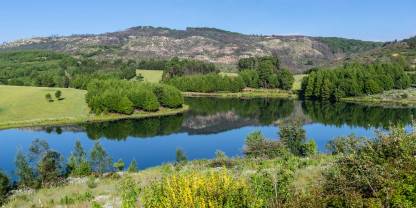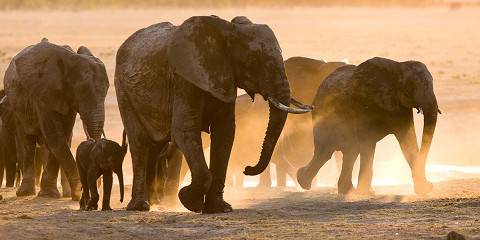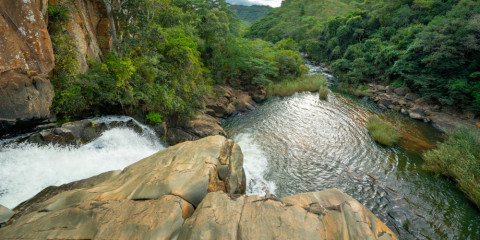Situated in Zimbabwe’s temperate Eastern Highlands, Nyanga National Park is not a classic wildlife destination but it holds considerable appeal to keen walkers. The main attraction is the scenery, which includes rolling meadows, montane forests, granite whalebacks and Africa’s second-tallest waterfall. Large mammals are scarce but the park offers rewarding birding. Several Iron Age archaeological sites lie within Nyanga.

-
Best Time To Go
- November to April (Birding and scenery)
-
High Season
- Never (The park is little visited)
-
Size
- 470km² / 181mi²
-
Altitude
-
1,126-2,430m /3,694-7,972ft
 View Photos
View Photos
 View Photos
+9
Photos
View Photos
+9
Photos
Pros & Cons
- Great hiking country
- Excellent birding destination
- Good fishing opportunities
- Zip line and skywalk at Africa’s second-tallest waterfall
- Rich in archaeological and historic sites
- Accommodation options available for a variety of budgets
- Few large mammals
- Human encroachment and lack of wilderness appeal
- Few patches of indigenous forest remaining due to exotic plantations
- Off the main tar road, 4WD vehicle is essential in the Wet season
Wildlife
Nyanga is not known as a wildlife destination but visitors might well encounter antelope such as klipspringer, reedbuck, greater kudu and blue duiker. The localized and rather handsome is commonly seen in and around forests. Leopard and spotted hyena are resident, and lion and buffalo are occasional vagrants, but sightings are extremely rare.
Birds
Nyanga is one of Zimbabwe’s birding hot spots. More than 300 species have been recorded, with a list that includes alluring near-endemics such as Gurney’s sugarbird, Chirinda apalis, Roberts’s warbler and Swynnerton’s robin. Nyanga is part of the globally important Eastern Zimbabwe Mountains Endemic Bird Area (EBA).
More about Nyanga’s birdlifeScenery
The landscape is dominated by rolling hills and rounded granite whalebacks that tower above steep gorges and valleys such as those carved by the Pungwe and Honde Rivers. Mutarazi Falls, Zimbabwe’s highest waterfall, drops 762m/2,500ft into the Honde Valley. Just outside the park, World’s View is a 90-hectare/222-acre National Trust property offering stunning views over the lowlands to the west.
Activities
The most popular activity is walking. Trails include the short steep descent to the surging Nyangombe Falls and a flatter footpath to Mutarazi Falls (the world’s 17th tallest). For adrenaline junkies, a privately run zip line and skywalk can be found at Mutarazi Falls. History buffs will want to visit Rhodes Nyanga Museum, set in a granite stable built in the 1890s, and a nearby Iron Age fort and village.
Weather & Climate
The climate of Nyanga is generally cooler and wetter than other parts of Zimbabwe. Mean daily temperatures are typically at least 5°C/9°F lower than the likes of Victoria Falls, nights are usually chillier, and rainfall is higher. Otherwise, the broad pattern of hot, wet summers (November to March) and cool, dry winters (April to October) is comparable to the rest of the country. More info:
Best Time To Visit
Nyanga can be visited at any time. The birdlife is good year-round but at its best from November to April when migratory birds are present and many residents are in breeding plumage. The scenery is at its best in the Wet season (November to March) or early in the Dry season from April to May. At this time, the vegetation is lush and green, and the air is clear and crisp. The sky gets very hazy towards the end of the Dry season. Wildlife viewing is hit-and-miss throughout the year. Unsurfaced roads might be difficult to navigate in the Wet season.
How To Get to Nyanga NP
Nyanga is usually visited at the beginning or end of a tour of the Eastern Highlands. The park is 260km/162mi east of Harare and the drive takes about 4 hours*.
*Driving times are only a rough indication. You should always consider the possibility of significant delays.
Health & Safety
Please read our malaria and vaccinations page for Zimbabwe and our general Zimbabwe safety page for more info:



